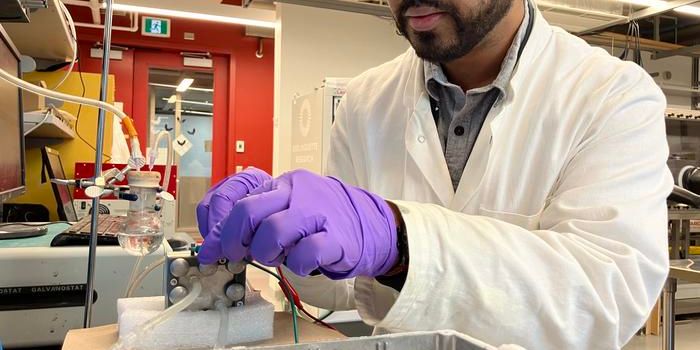Discovery of a new molecule could improve storage of big data
New research from scientists at the University of Limerick's Bernal Institute details the discovery of a molecule that has the potential to change the way we store and process big data. This metal-organic molecule provides an alternative way of managing big data, one that requires less energy than the current binary system. It’s three distinct, long-lived states could have big implications for the Internet of Things (IoT) and Artificial Intelligence (AI), say the researchers, who collaborated with scientists from National University of Singapore (NUS), Indian Association for the Cultivation of Science (IACS), and Texas A&M University (TAMU). Their collective work was published recently in the journal Nature Nanotechnology.
According to theory lead Damien Thompson, Associate Professor in Physics at UL, current binary devices are lacking to be able to support next-generation computing because in order to store and process big data, they require increasingly ginormous amounts of power, complicated component manufacture and intricate circuit designs. The discovery of a molecule that provides an alternative to binary devices is significant.
"Here, we managed to push way beyond industry roadmaps by finding a ternary resistive memory device with three states that are well-separated from each other in terms of conductance and, just as importantly, stay working away perfectly for weeks on end," explained Professor Thompson.
"The trick to this first commercially viable multi-level computing device is a slightly arcane physical phenomenon called 'charge disproportionation' or symmetry breaking, which we proved using computer simulations," he added.
This development in molecular nanotechnology builds on a past understanding of electronic symmetry breaking by charge disproportionation. While scientists have previously observed that charge disproportionation triggers ferroelectricity, until now it has only been observed occurring under specific physical conditions of high or low temperature or high pressure. But the discovery of this ternary molecule shows that voltage-triggered charge disproportionation is possible in ambient conditions and that, making it ideal for high-density, ultra-low-energy digital computing.
"Whereas here the third asymmetric state is created simply by allowing current to flow through the device and it persists over a broad temperature range (-100 to +100 °C) so it is suitable for most conventional computing as well as future applications emerging from the symbiosis between physics, computing and biology,” commented Professor Thompson. “In this new material, ions pulse back and forth between different binding sites on the molecules, which opens up the third state, making it energetically accessible and technologically exploitable."
Sources: Nature Nanotechnology, Science Daily









